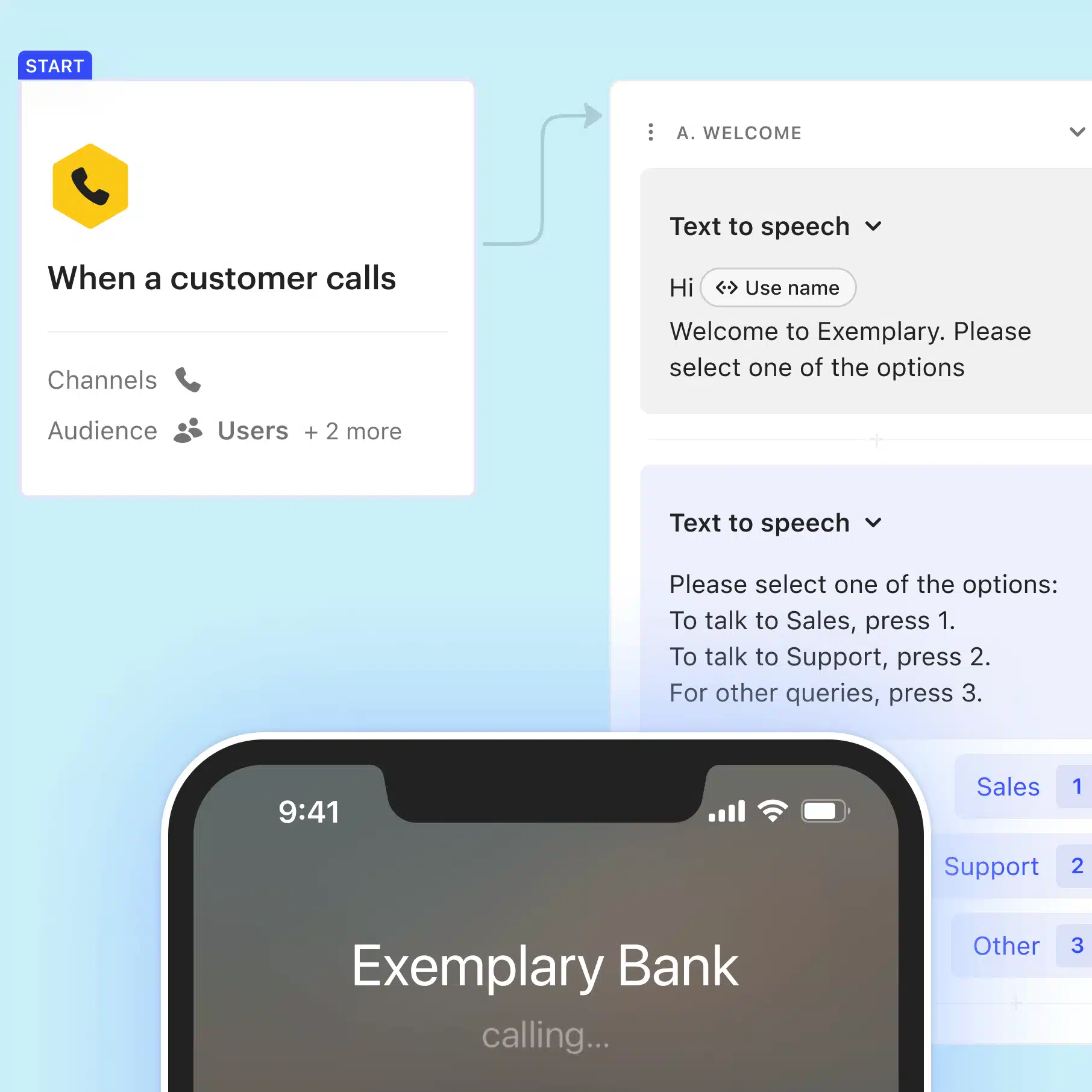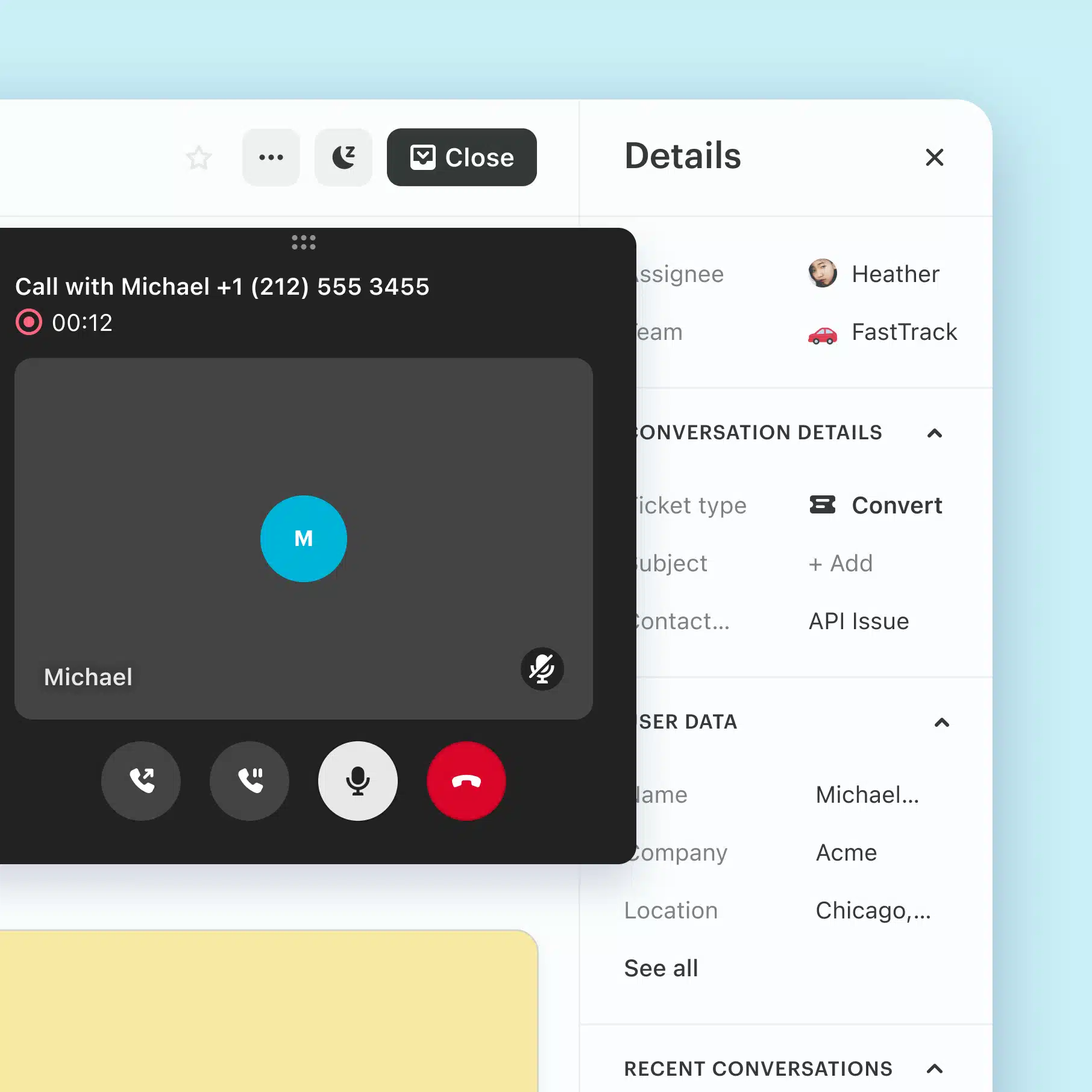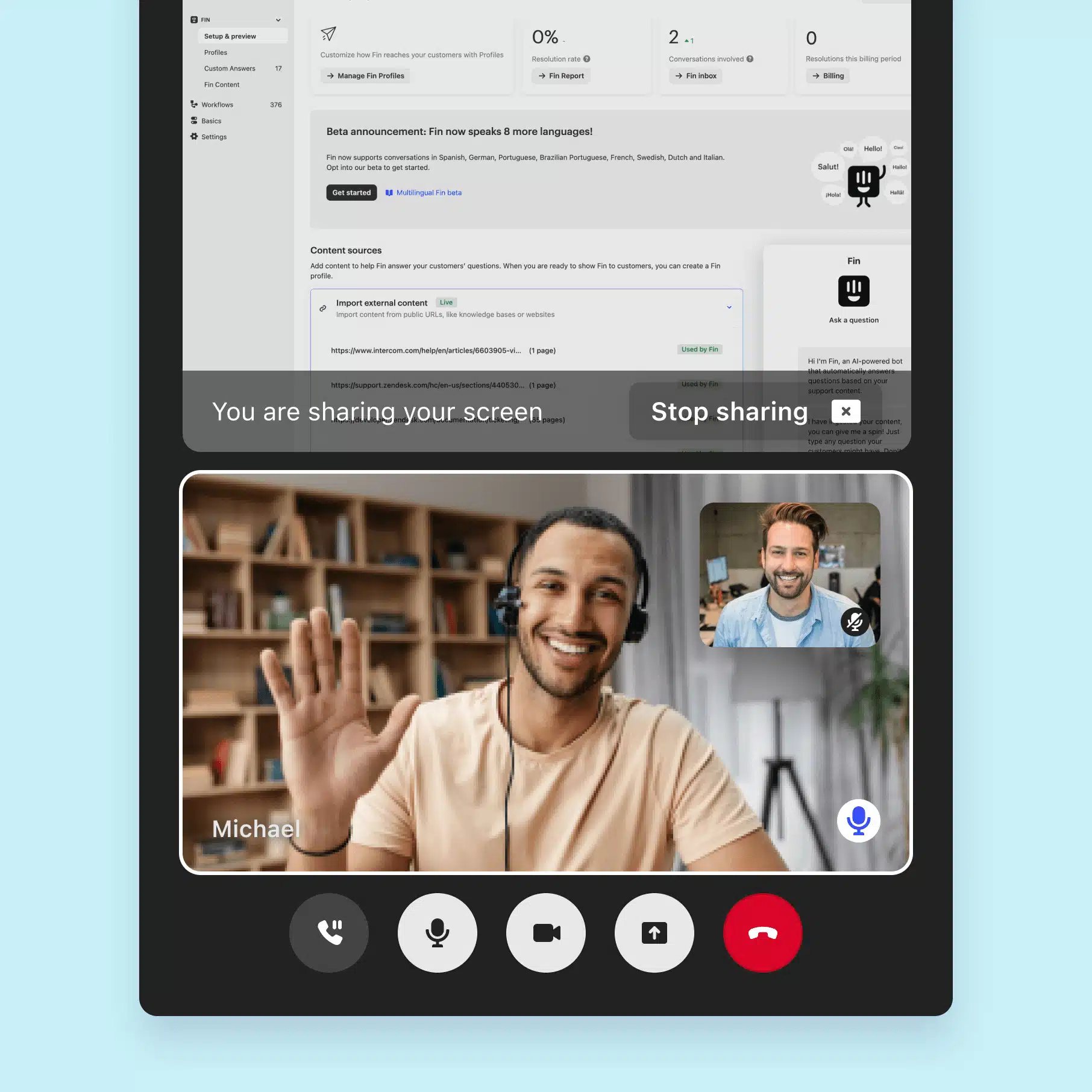Intercom Phone: Bringing a Modern Support Experience to a Familiar Channel
Intercom is a popular platform for connecting customer service and support teams with their customers in real time. Intercom has been a leading solution for web or app-based chat and AI-powered chatbot for inquiry resolution for some time, but now they are expanding beyond text-based support channels with the recent launch of Intercom Phone. These new capabilities give customers the option to communicate using voice – either through a rich browser-based experience with Intercom Messenger or using a traditional telephone via an IVR.
This feature is designed to enhance the Intercom experience and provide more options for connecting with customers. In this blog post, we will explore how the Intercom phone feature works and what benefits it offers for businesses and customers.
How Intercom Phone Works

The Intercom phone feature is a powerful way to connect with your customers and provide them with the best support possible. With this feature, you can make and receive voice calls from the same place where you manage your chats, emails, and social media messages: the Intercom Inbox. This means you can keep all your context close by without having to switch between other tabs and resources to take calls. You can also create routing rules to route the calls to the correct user that’s able to handle it, based on criteria such as availability, skills, or location.

Intercom Phone is currently only available to customers on our new pricing plans who joined Intercom on or after November 15, 2023. Intercom customers on legacy pricing plans who were not on the early beta will not have access to Phone, but you can indicate your interest via a banner on the settings page.
To use the feature, users need to enable it in their Intercom settings and assign a phone number to their team inbox. Users can then make and receive voice calls from the Intercom inbox on their desktop or mobile devices. Users can also choose to record and transcribe their calls for future reference.
Outbound Calls
To make an outbound call, agents can simply click on the phone icon next to a customer’s name in Intercom and choose whether to call their phone number or their browser. For browser calls, if the customer is online, they will see a pop-up notification on their screen asking them to accept or decline the call. If the customer is offline, they will receive a missed call notification and a voicemail message if the user leaves one. Agents can also send a follow-up message after the call to summarize the conversation and provide additional information.
This feature can be used for escalation or follow-ups. For example, if a chat conversation does not resolve a support issue, you can switch to a voice conversation. Also, if a voice call is dropped, the agent can call the customer back directly instead of waiting for them to restart the conversation.
Inbound Calls
Intercom Phone gives support teams the opportunity to operate like a true Omnichannel Contact Center. Intercom users now have the ability to publish a phone number, or port an existing phone number and enable a traditional telephone IVR. Using Intercom’s visual builder, you can easily create IVR trees that provide a dynamic menu experience, lookup customer data, provide self-service options, and route calls to the right team member’s Inbox based on the type of call or specific customer attributes.
When an inbox user receives an inbound call, users will see a pop-up notification in Intercom when a customer calls their team inbox number or starts a call through Messenger. Users can choose to accept or decline the call, or transfer it to another teammate. Users can also see the customer’s profile and previous interactions while on the call to provide personalized and relevant support.
You can also set up special rules, like switching to chat or voicemail if your team is unavailable.

The Intercom phone feature also gives you the flexibility to switch between chat in Messenger and voice or video call anytime during the conversation. You can start with a chat and escalate to a call if needed, or vice versa. You can also use video and screen sharing to help handle the inquiry more effectively. With the Intercom phone feature, you can deliver a seamless and satisfying customer experience across multiple channels.
How the Intercom Phone Feature Improves the Intercom Platform
The Intercom phone feature adds a new dimension to the Intercom platform and provides several benefits for both businesses and customers. Here are some of the key features and advantages of the Intercom phone feature:
- Voice communication: The Intercom phone feature allows users to communicate with their customers using voice, which can be more convenient, efficient, and human than text. Voice communication can help users build rapport and trust with their customers, resolve complex issues faster, and deliver a more personal and memorable customer experience. Some situations may require an empathetic and human touch that a voice call can provide, such as when a customer is frustrated, confused, or unhappy.
- Seamless omnichannel experience: The Intercom phone feature is seamlessly integrated with the Intercom platform, which means users can access all the features and data they need in one place. Users can easily switch between chat and voice, while leveraging the same workflows and inbox rules already set up for messaging. You can even port your existing phone numbers to help simplify the transition. This setup allows an agent to see the customer’s profile and history, and use Intercom’s automation and analytics tools to optimize their communication and performance. It also unifies all call, chat, and customer record data in a single location, so users don’t have to switch the user experience to deliver quality service. Users can also record and transcribe their calls for future reference and analysis.
- Flexibility and choice: The Intercom phone feature gives users and customers more flexibility and choice in how they communicate. Users can choose to call customers on their phone or browser, depending on their preference and availability. Customers can also choose to accept or decline calls, or request a callback at a later time. Additionally, users can also use video and screen sharing to help handle the inquiry more effectively.
Conclusion
The Intercom phone feature is a powerful and innovative addition to the Intercom platform that enables users to make and receive voice calls directly from the Intercom app. The feature enhances the Intercom experience and provides more options for connecting with customers. The feature also offers several benefits for both businesses and customers, such as voice communication, seamless integration, and flexibility and choice. The Intercom phone feature is a great way to improve customer communication and satisfaction, and ultimately grow your business.
If you are interested in learning more about how you can use the Intercom phone feature to enhance your customer communication and support, you can contact us here. As Intercom consulting experts, we can help you set up, customize, and optimize the Intercom phone feature for your business needs and goals.
